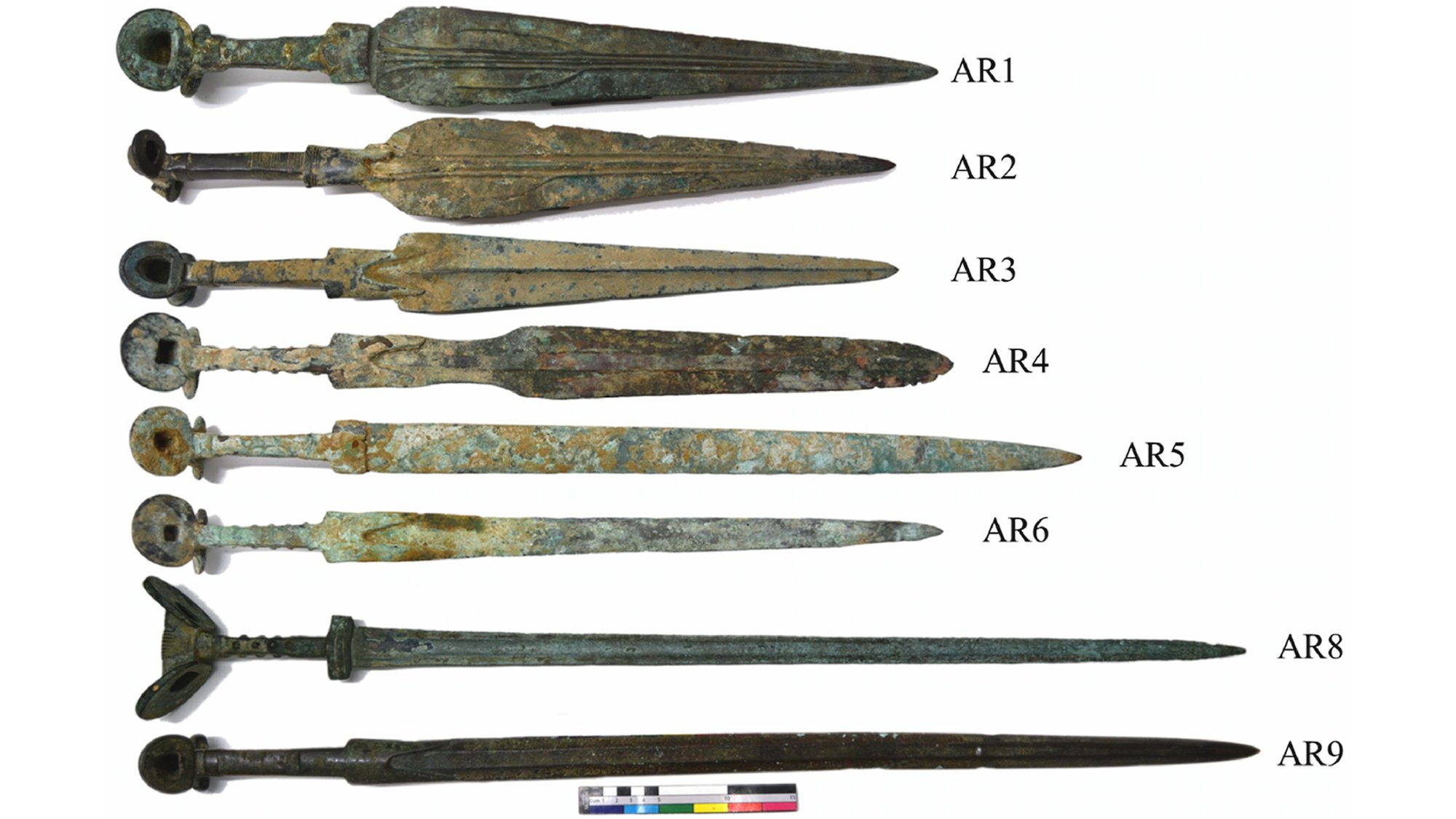

Neutron imaging has helped reveal historical discrepancies hidden within a collection of illegally trafficked Iron Age swords. But the nine ancient Iranian weapons aren’t wholesale forgeries—according to an October 8 announcement from researchers at the ISIS Neutron and Muon Source, they were assembled by fusing metal fragments from multiple different artifacts together to form “Frankenstein’s monster” pastiches in order to boost their potential black market value.
To determine each roughly 3,000-year-old sword’s alterations, researchers relied on a tool not often seen in archeology. As explained in a study published on Tuesday in the Journal of Archaeological Science, a team from Cranfield University, the ISIS Neutron and Muon Source, and the British Museum used neutron tomography to analyze the weapons after they were recently seized by authorities at the UK border. Instead of more common X-ray techniques, the equipment ‘s neutron beams allow it to generate renderings of a subject’s internal features even if surrounded by dense material like bronze and iron. This is especially helpful in pinpointing organic matter like glue, as well as the individualized makeup of an object’s materials.

In this case, analysis detected not only glue, but modern drill holes identified by their circular cross-sections and too-perfect outlines. Researchers even found a drill bit fragment embedded in one of the swords. Forgers also replaced blades’ missing original iron sections with bronze. Based on the materials and markings, the team estimates the nine pastiches were likely assembled only recently.
This isn’t the first instance of altered black market sword artifacts. The study’s authors note similar amalgamations were discovered at least as far back as the 1970’s—but in those cases, forgers often relied on soldering instead of glue.
“Whether this is indeed a chronological shift, or simply an indication of inter-group variation between contemporaneous forgery traditions, remains to be seen,” researchers explained in their paper. But these alterations have implications that go far beyond inflated black market dealings—they muddy the historical waters for experts.
[Related: Egyptologists find sword possibly wielded against the ‘Sea Peoples.’]
“Early Iron Age Iranian bladed weaponry plays a significant role in discussions of metallurgical development in the ancient Near East,” the team wrote in their study. “Due to its ubiquity in museum collections, as well as co-occurrence of bronze, iron, and bimetallic forms, it figures prominently in debates about the early ironworking techniques in the late 2nd and early 1st millennia BCE.”
In Tuesday’s announcement, Nathaniel Erb-Satullo, a senior lecturer in archeological science at Cranfield University, Iran has been a “center of metallurgical innovation” for millennia, even though many details about their processes still remain unknown.
“Bimetallic objects are important in helping us understand [society’s] transition from the use of bronze to the use of iron,” added Alex Rodzinka, study lead author and a Cranfield University PhD student in archeology. “Illicit modifications make this task much more complicated.”
Although currently on (contextualized) display at the British Museum, researchers said the swords will eventually be repatriated to Iran. Meanwhile, Rodzinka and colleagues have shown neutron tomography can be a valuable asset in reviewing allegedly authentic antiques. That said, the latest discoveries indicate this technique may soon be in higher demand.
“Neutron analyses have been crucial in providing the true extent of modern modifications on ancient Iranian swords,” ISIS Muon and Neutron Source imaging scientist Anna Fedrigo said on Tuesday, before warning that, “any bronze-bladed sword with iron in the hilt may [now] reveal to be a pastiche.”